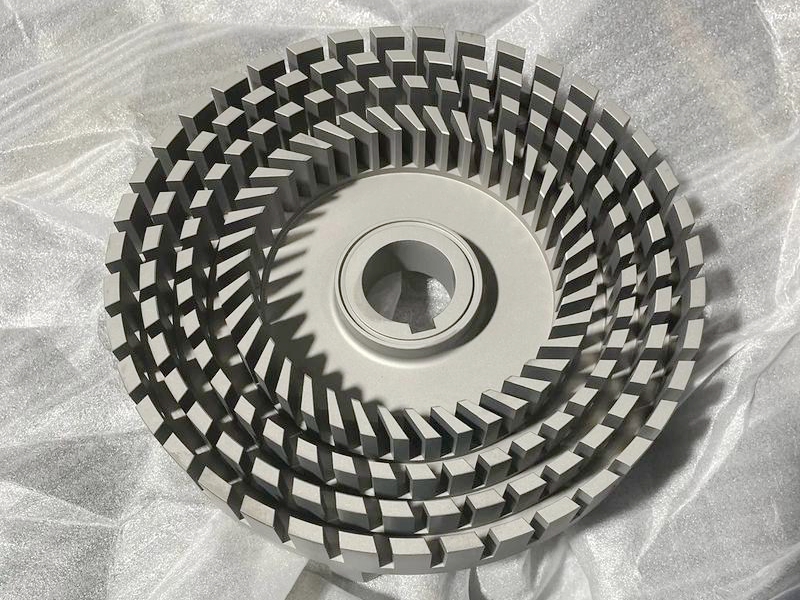Improving Surface Hardness of Custom Parts through Nitriding
The Critical Role of Nitriding in Surface Hardness Enhancement
Nitriding is a thermochemical process that diffuses nitrogen into the surface of metals, significantly enhancing hardness and wear resistance for tool steel and stainless steel components. Widely adopted in automotive and aerospace industries, this treatment forms a hard nitride layer without compromising the core material’s toughness.
The global nitriding market is projected to reach $4.8 billion by 2026, driven by demand for high-performance gears, shafts, and molds in power tools and energy sectors. Nitriding complies with AMS 2759/10 standards and offers a cost-effective alternative to coatings like PVD for high-wear applications.
The Nitriding Process: A Step-by-Step Breakdown
Preprocessing Essentials
Surface Cleaning: Remove oils and oxides via ultrasonic cleaning or abrasive blasting.
Stress Relieving: Anneal parts at 500–600°C to eliminate machining stresses.
Core Techniques Compared
Nitriding Process | Case Depth | Key Materials | Application Scope | Advantages |
|---|---|---|---|---|
Gas Nitriding | 0.1–0.5 mm | Tool Steel, Alloy Steel | Engine crankshafts | Uniform hardness, high wear resistance |
Plasma (Ion) Nitriding | 0.05–0.3 mm | Stainless Steel, Titanium | Aerospace landing gear | Precise control, reduced distortion |
Salt Bath Nitriding | 0.01–0.2 mm | Low-alloy Steel | Hydraulic valves | Rapid processing (1–4 hours) |
Post-Processing & Optimization
Cooling: Slow cooling in the nitrogen atmosphere to prevent brittleness.
Polishing: Achieve Ra <0.2 µm using electropolishing for high-contact surfaces.
Performance Advantages vs. Limitations
Property | Nitrided Parts | Alternative Treatments |
|---|---|---|
Surface Hardness | 800–1200 HV (Gas Nitriding) | 600–900 HV (Carburizing) |
Wear Resistance | 3–5x improvement over untreated surfaces | 2–3x improvement (PVD coatings) |
Corrosion Resistance | Moderate (requires passivation for stainless steel) | High (electroless nickel plating) |
Temperature Limit | Stable up to 500°C (plasma nitriding) | Degrades above 300°C (organic coatings) |
Cost Efficiency | $10–50 per part (batch-dependent) | $50–200 (PVD/CVD coatings) |
Industrial Applications: Where Nitriding Excels
Automotive: Camshafts and transmission gears (hardness >1000 HV).
Aerospace: Turbine blades and actuator components (plasma nitrided).
Medical Devices: Surgical instruments with biocompatible nitride layers.
Nitriding Process Selection Guide
Material Compatibility Matrix
Substrate Type | Manufacturing Process | Recommended Nitriding Process | Performance Gain Focus |
|---|---|---|---|
Gas Nitriding | Wear resistance, fatigue strength | ||
Plasma Nitriding | Corrosion-hardness balance | ||
Plasma Nitriding | Lightweight, high-temperature stability |
Supplier Evaluation Criteria
Equipment: Automated gas nitriding furnaces with temperature uniformity ±5°C.
Certifications: NADCAP for aerospace, ISO 13485 for medical devices.
Surface Finish Technology Matrix
Technology | Main Function | Key Features | Advantages |
|---|---|---|---|
Nitrogen diffusion for surface hardening | 800–1200 HV, case depth 0.1–0.5 mm | Enhanced fatigue life, minimal part distortion | |
Carbon infusion for high-depth hardness | 600–900 HV, case depth 0.5–2 mm | Cost-effective for thick sections | |
Thin-film deposition for wear resistance | 1–5 µm thickness, decorative finishes | High adhesion, low friction |
Technical Suitability: A Four-Dimensional Model
Hardness & Wear Resistance Nitriding achieves surface hardness up to 1200 HV, outperforming carburizing and organic coatings in high-stress applications.
Cost Efficiency Gas nitriding costs $10–50 per part, offering 40–70% cost savings over PVD coatings for medium-to-high volume production.
Temperature Stability Plasma-nitrided components withstand operational temperatures up to 500°C, which is ideal for aerospace and energy sectors.
Processing Time Salt bath nitriding completes in 1–4 hours, enabling rapid turnaround for urgent orders.
FAQs
How does nitriding differ from carburizing?
Can nitriding be applied to aluminum alloys?
What is the typical case depth for plasma-nitrided parts?
How does nitriding affect corrosion resistance?
Is post-machining required after nitriding?

